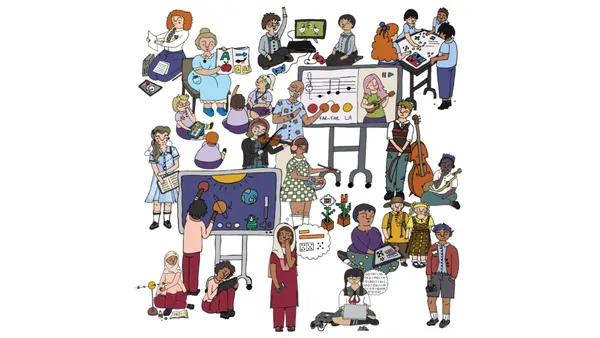Dive Brief:
- Reducing negativity in schools and creating warm, welcoming school environments — not just for parents and students, but also for educators — is an increasingly popular focus for districts across the nation, according to District Administration.
- Negative energy in schools and frustrations over performance are typically caused by inadequate training and unrealistic expectations, the article says.
- Clear hiring objectives and strong professional development opportunities can help boost morale in schools. Little things, like having an employee newsletter, and celebrating wins can also help.
Dive Insight:
When new teachers enter the classroom they are often taught a simple, but often forgotten management protocol: Instead of picking out the students who are not following directions, call out the ones that are. It makes the students who are doing what they are supposed to be doing feel appreciated and noticed and the ones that aren’t following instructions will also, typically, self-correct during this moment of praise. They either didn’t understand what was expected of them, or they did and didn’t listen, but now want some positive recognition as well. The lesson is simple; people, typically, respond to positive feedback better than negative feedback. It also creates a classroom environment that feels more productive and optimistic.
The article hits on this lesson about the importance of creating positive, proactive school communities — and highlighting positive interactions and behavior. Employee newsletters, encouraging all to be treated with respect and dignity may seem like small and inconsequential steps, but they can make a world of difference when it comes to supporting a district that feels collaborative and positive.
School leaders can also create a positive school community by building relationships with employees, such as knowing facts about them and showing that they are interested in their growth and development as educators. Educators will be more inclined to trust their administrators and want to be apart of the community if they feel heard. This is evidenced by the growing examples of bottom-up decision making — which not only creates positive feelings within a district, but can also spark innovation.
As social-emotional learning becomes an integral part of more schools, it's no surprise that this trend of treating employees as as complex, but appreciated, people is yielding benefits and trickling beyond the classroom and into teacher’s lounge.











